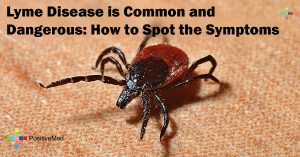Generally, there are three types of celiac disease which are based on the symptoms a patient experience. In reference to the World Gastroenterology Organization, classic, atypical (non-classic), and asymptomatic (silent) are the most common types of celiac disease.

Classic Celiac Disease
While classic celiac disease usually starts in early childhood, adults can suffer from the same condition as well. This condition typically develops due to damages of the small intestines. Symptoms in children:
• Lack of appetite accompanied by weight loss
• Stunted growth
• Diarrhea
• Lethargy
• Rickets (soft and weaker bones)
Symptoms of celiac disease in adults include:
• Poor absorption of nutrients in the intestines (malabsorption)
• Diarrhea
• Abdominal discomfort and bloating
• Fatty, pale, and foul-smelling stool
• Loss of weight and muscle mass
Atypical Celiac Disease
Patients with atypical celiac disease or non-classic celiac disease do not experience some symptoms associated with classic celiac disease. For instance, they don’t experience common small intestine symptoms or malabsorption. However, the most notable the most common symptoms of atypical celiac disease include:
• Anemia due to iron deficiency
• Constipation
• Heartburn
• Loss of bone mass
• Unexplained infertility
• Bone fractures
• Migraine or chronic fatigue
• Peripheral neuropathy (numbness, pain, or tingling in feet or hands)
• Deficiency in vitamin B12 and folic acid
• Defects in dental enamel
• Dermatitis (itchy skin rash)
• Early menopause or late menarche
• Chronic increase in liver enzymes (hypertransaminasemia)
• Depression and anxiety
• Mild indigestion
Related link: Symptoms of Gluten Sensitivity You Probably Don’t Know About
Atypical celiac disease is commonly found in adults, but the condition has been reported in older children. Normally, there are many cases of atypical celiac disease than classic celiac disease.
Asymptomatic Celiac Disease
Patients with asymptomatic celiac disease, also known as silent celiac disease, don’t exhibit symptoms of celiac disease like weight loss, fatigue, diarrhea, or constipation. However, they may show the following symptoms:
• Joint pain
• Loss of bone density
• Migraines or headaches
• Swelling due to the accumulation of fluids in body tissues (edema)
• Mild, early gluten ataxia (an autoimmune neurological disease that can damage cerebellum in the brain)
• Damage to the lining of the small intestines (villi)
• Blood test abnormalities
Asymptomatic celiac disease frequently attacks children with type 1 diabetes mellitus whose parents or siblings already suffer from celiac disease. Nevertheless, adults may experience this condition as well.
Note
Irrespective of the type of celiac disease you could be suffering from, it is important to consult a healthcare professional immediately if you notice any symptoms associated with this condition. An appropriate diagnosis will help in identifying your condition to start treatment. If left untreated until the late stages, celiac disease can lead to a lifelong struggle.
Symptoms
If you are an adult, you should watch out for these symptoms of celiac disease:
• Weight loss
• Diarrhea
• Abdominal pain
• Nausea
• Vomiting
• Fatigue
• Constipation
• Gas or bloating
Even though celiac disease eventually leads to chronic damage in the small intestine, over 50% of adults suffering from this condition may exhibit symptoms that are not linked to the digestive tract. The symptoms may include:
• Iron deficiency leading to anemia
• Loss of bone mass or osteoporosis
• Canker sores or mouth ulcers
• Fatigue and headache
• Softening of bones (osteomalacia)
• Arthritis and joint pain
• Damage of the nervous system resulting in tingling and numbness in the hands and feet
• Cognitive decline and loss of balance
• Spleen disorder or hyposplenism
• Heartburn or acid reflux
• Missed menstrual period
• Recurrent miscarriage or infertility
• Fatty liver and biliary tract disorders
Celiac Disease Symptoms on the skin
Patients with celiac disease may also experience dermatitis herpetiformis. This is a condition where the skin becomes itchy, triggering rashes in different places like the elbow, scalp, buttocks, and torso. These rashes can have the same shapes and sizes and may appear like eczema. However, some people may develop skin erosions and scratch marks. Dermatitis herpetiformis is commonly noticeable in adults aged over 20 years. Nearly a quarter of patient with celiac disease develop this condition. Though medical professionals have never identified the exact cause, it is thought that skin rashes in patients with this condition occur due to lining damage of the small intestines.
Celiac Disease Complications
On suspecting these symptoms, you should contact your doctor immediately because the following complications can develop.
• Malnutrition due to poor absorption of nutrients along the digestive tract
• Low bone density and calcium deficiency
• Miscarriage or infertility due to malabsorption of calcium and vitamins
• Lactose intolerance
• Susceptibility to cancer
• Neurological disorders
Conclusion
You are now aware of the three different types of celiac disease. Their classification is based on signs and symptoms. The good news is that like all other digestive disorders, celiac disease can be cured by paying attention to your digestive system. You can prevent future attacks by making lifestyle and dietary changes.






